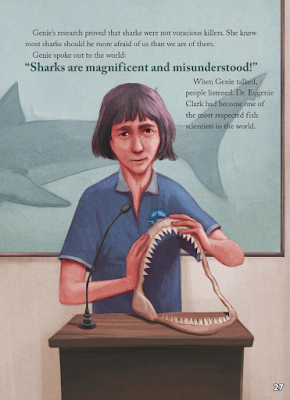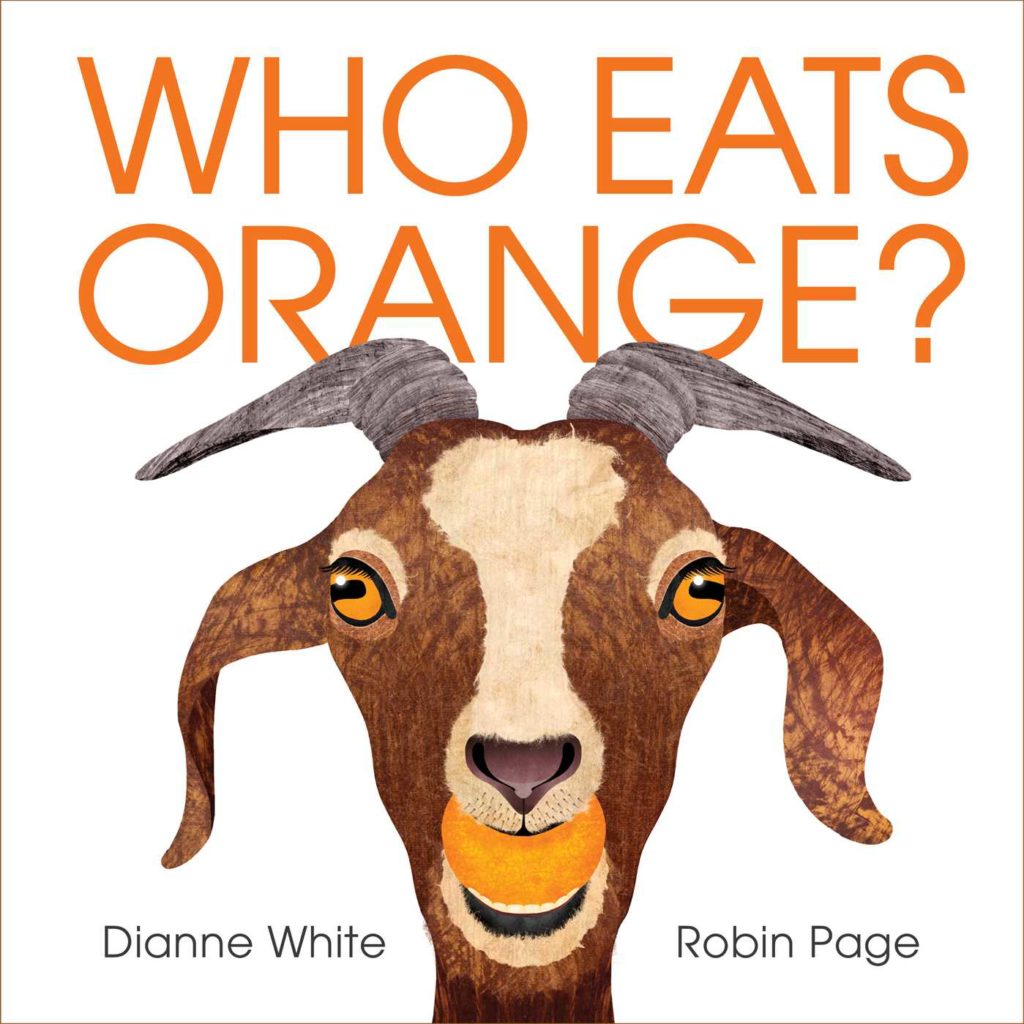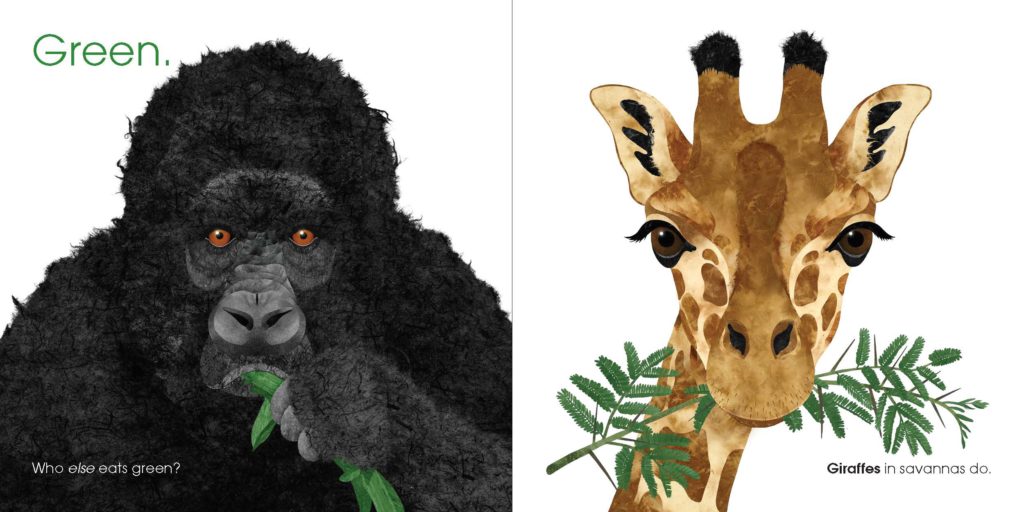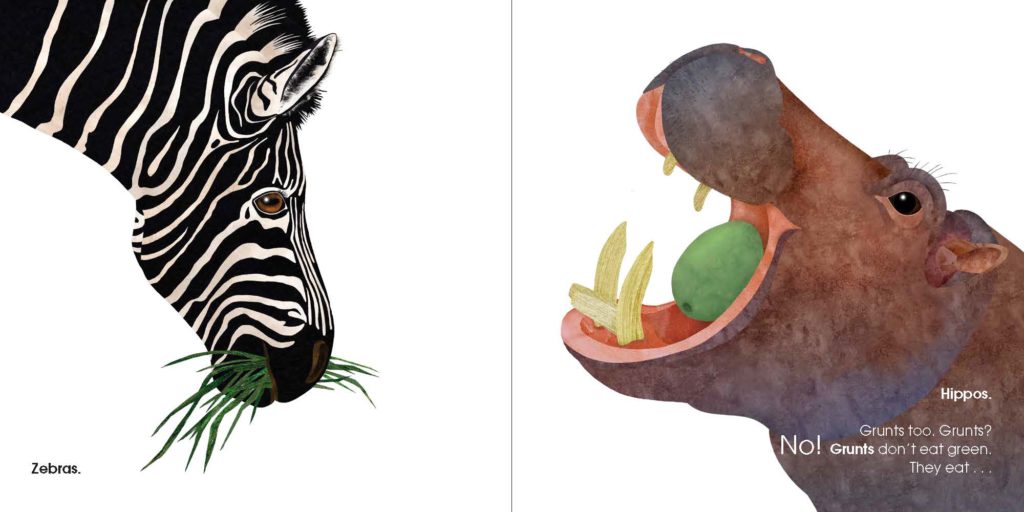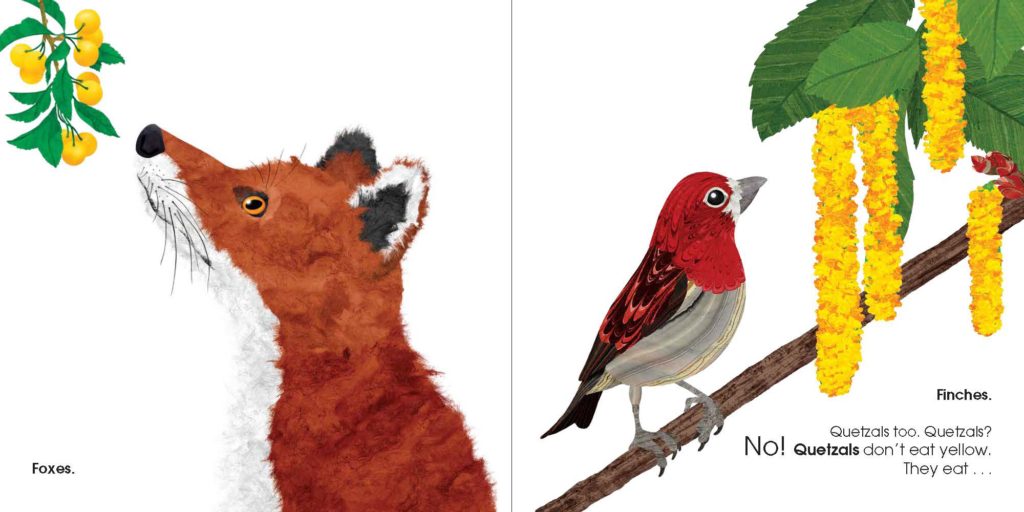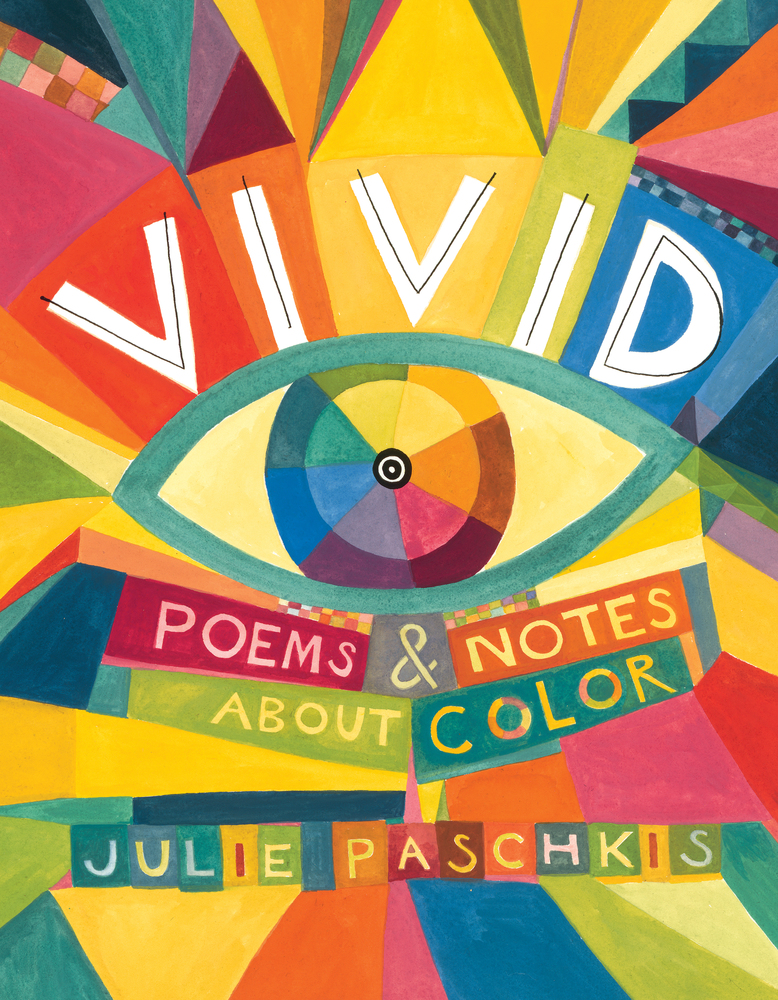 |
| Cover image of Balloons Over Broadway: The True Story of the Puppeteer of Macy's Parade by Melissa Sweet. |
By Melissa Sweet
Houghton Mifflin Books for Children
2011
Ages 4-8
Lexile AD1000
Tony Sarg was always curious. Curious about the world around him, about how things worked, and about how to create something new. When his father gave him the chore of feeding the family chickens every morning, Tony was curious if he could do it without getting out of bed. Young Tony applied that curiosity to making a device to feed the chickens, "and his dad, so impressed, never made Tony do another chore." This curiosity and creativity continued throughout Tony's life, and Melissa Sweet expertly captures it in Balloons Over Broadway.
 |
| Tony feeding chickens from bed in Balloons Over Broadway. |
 |
| Macy telephoning Sarg and asking him to replace the animals in the parade in Balloons Over Broadway. |
 |
| Sarg and associates creating the first helium balloons in Balloons Over Broadway. |
 |
| Giant balloon animals flying through the streets in Balloons Over Broadway. |
 |
| Children looking up at balloons in Balloons Over Broadway. |
Source: Library Copy
Read-Aloud Video:
Further Reading:
- Horn Book "Five Questions for Melissa Sweet"
- Art of the Picture Book "An Interview with Melissa Sweet"
- Jama's Alphabet Soup "melissa sweet's balloons over broadway (a review, a little chat, and a special giveaway!)"
- Seven Impossible Things Before Breakfast "Before You Watch That Thanksgiving Parade..."
Curriculum Connections:
- Balloons Over Broadway Activity Kit
- Balloons Over Broadway Educator's Guide
- Classroom Bookshelf "2012 Robert F. Siebert Informational Book Medal Winner: Balloons over Broadway"
- Reading is Fundamental "Balloons Over Broadway"
- University of Minnesota Libraries "Balloons Over Broadway, Melissa Sweet, and the Engineering of a Picture Book"








